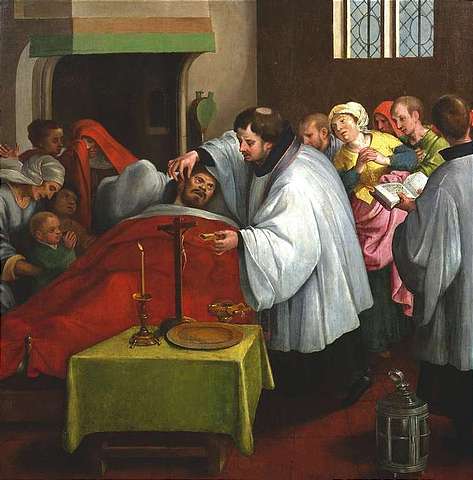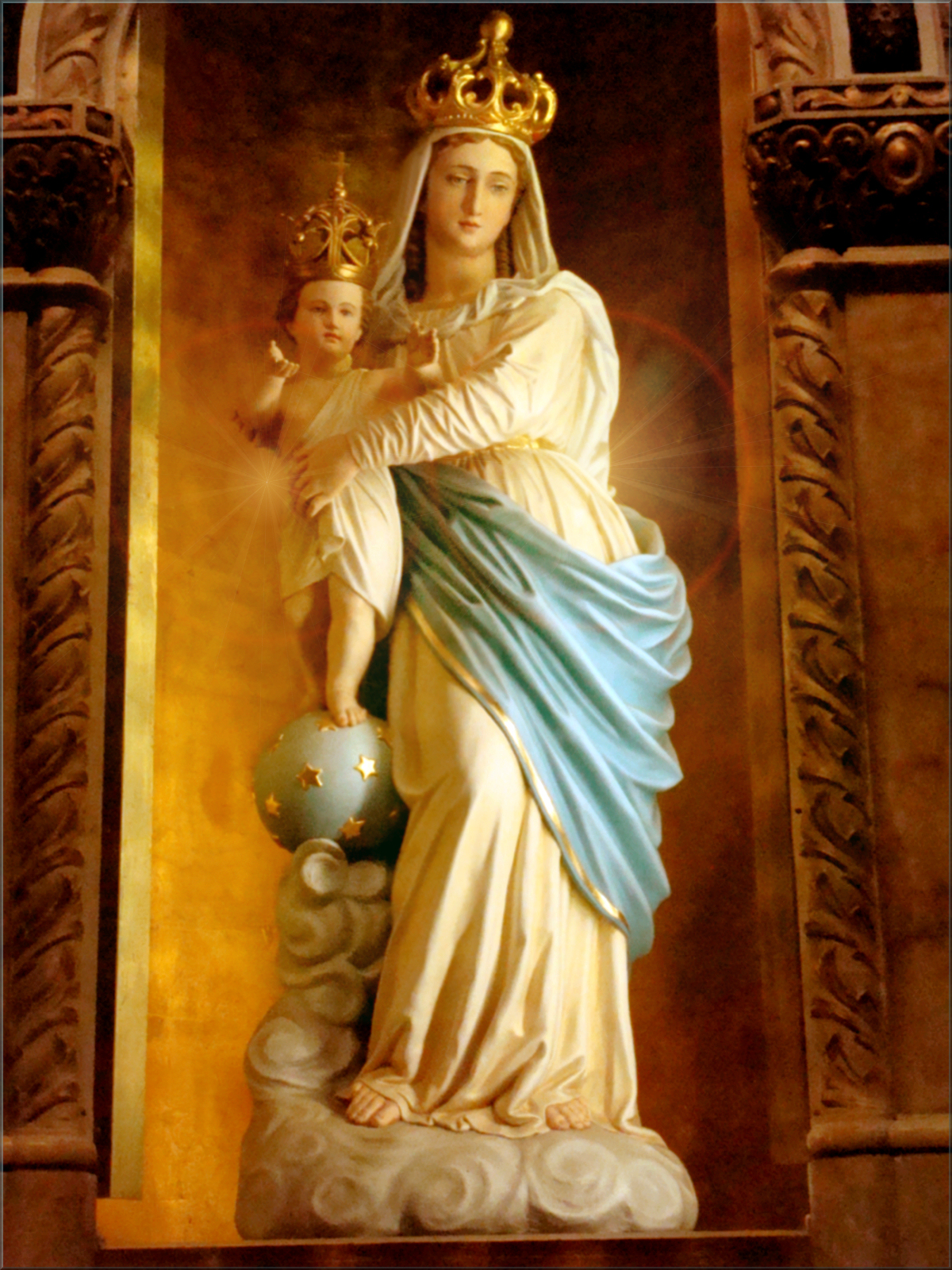When I learned my seven sacraments, it was called Extreme Unction. We were tested on it. Important test in catechetical class, the seven sacraments; important test.
You can always tell a fellow Catholic. We have a language and an understanding all our own, we do. Having volunteered to keep vigil with the dying in hospice, any flavor, we keep the focus on the dying and do what is most appropriate for the person. Their tradition’s prayers, reading from the Bible, or just calming music from my ipad if an atheist, watching tv with them, talking with a Jewish woman. It was then I learned the term “actively dying” which is a medical condition determined by a doctor.
Whatever the sojourner or their family dictates or prefers. We are there to serve. I have served in both Catholic and secular hospices. One hospice nurse said to me, as we approached each other in the dark, “Thank God you’re here!!” The nicest greeting I ever received. Imagine if work greeted you that way!! Hospice nurses are grateful for vigil volunteers to keep the sojourner company when there is no family, when the family is exhausted, whatever and whenever the reason, usually at night when the family is unavailable, but any time of the day. The vigil volunteer frees the hospice nurse to tend to the others, of which there are too many per hospice nurse; too many. Our commitment is that no one should die alone. It is one of my favorite ministries, anticipating the joy and blessedness that follow the sojourner, and soon myself. Blessed be God in His Most Holy Name!!!
In my childhood home, hanging on the wall was a “sick call set” very much like the one below. The front slides off. Two candles and holy water are revealed. The crucifix can by made to stand by sliding the bottom of it onto the cross base where all the materials were contained. I suppose the idea, without instantaneous communication, the priest may be making his rounds across remote terrains, or be near enough by to summon, but may not happen to have the required materials, hence, the “sick call set” in every Catholic home. I recall when the Last Rites were the Last Rites, and the Anointing of the Sick emerged out of Vatican II as a separate practice.
What are Sick Call Sets?
These sets usually consist of a crucifix, two candles, a vessel for holding holy water, and a stand. They are used by priests to administer the Sacrament of the Anointing of the Sick when they come to “call” or visit someone who is seriously ill and homebound. While the sacrament was originally only given to those who were dying, it can now be given to anyone who is facing a serious illness or surgery, as well as the elderly.
History of Sick Call Sets
While some collectors have come across sick call sets dating back to the 19th century, sick call sets likely existed long before. In the early days, before people had access to hospitals, sick family members were cared for in the home. A sick call set was therefore quite common in many Catholic homes.
Biblical historians point out, that sick call sets existed in some form or variation well before the 19th century. The act of anointing the sick is described in James 5:14-16: “Is anyone among you sick? He should summon the presbyters of the church, and they should pray over him and anoint [him] with oil in the name of the Lord, and the prayer of faith will save the sick person, and the Lord will raise him up. If he has committed any sins he will be forgiven.”
History of Sick Call Crucifixes
In addition to anointing a sick person, these sets can bring immense comfort to loved ones. The Catechism of the Catholic Church points out that the Sacrament of Anointing of the Sick is “both a liturgical and a communal celebration…the Sacramental anointing of the sick can inspire and comfort both those who are ill and their family and friends who are gathered.”

-by Michelle Arnold, Catholic Answers
“Earlier this month I went in for surgery. I had undergone several operations during childhood, but it had been almost thirty years since the last one and this would be my first as a Catholic. So, in addition to making preparations for my convalescence, I decided to request the anointing of the sick, a sacrament I had never received before.
Anointing of the sick sometimes is confused with the “last rites.” But that phrase refers to the three sacraments—confession, anointing of the sick, and final Holy Communion—ordinarily given to a Catholic who is seriously ill or beginning to be in danger of death. (There’s also the Apostolic Pardon, which isn’t a sacrament or rite, but an indulgence offered to the dying. It can be given directly by a priest, or received through desire by the dying person who meets the requirements for the indulgence.)
“Through the holy mysteries of our redemption, may Almighty God release you from all punishments in this life and in the life to come. May he open to you the gates of paradise and welcome you to everlasting joy.”
“By the authority which the Apostolic See has given me, I grant you a full pardon and the remission of all your sins in the name of the Father, and of the Son, and of the Holy Spirit.”
Let’s dispel any confusion by taking a look at each of the final sacraments the Church offers to souls preparing for their journey from this life to the next.
Confession
If possible, a seriously ill person should do all he can to go to sacramental confession first. Reception of the other sacraments doesn’t necessarily depend on sacramental confession, but a valid confession ensures the soul is properly disposed to receive anointing of the sick and final Communion. It also prepares the soul to receive the indulgence of the Apostolic Pardon, especially if a priest isn’t present at the point of the person’s death.
There are many ways in which a sick person can request sacramental confession. If he’s well enough to travel, he can go to confession during one of the scheduled times at his parish. If he wants to receive anointing of the sick at the same time, he can make an appointment with a priest to receive the final sacraments. If he is homebound, he or someone acting on his behalf can ask a priest to visit for confession.
Sometimes there can be challenges in convincing a busy priest to visit a sick patient, especially when the priest doesn’t ordinarily have chaplain duties at a hospital. I recommend that the sick person or his caregivers keep petitioning a hospital chaplain’s office or local parishes to send out a priest. Don’t lose heart, don’t accept “no” for an answer, and do not accept non-priestly delegates—such as deacons or extraordinary ministers of Holy Communion—when sacraments are needed that only a priest can offer (confession, anointing of the sick).
Anointing of the sick
Not having received anointing of the sick before, I was surprised to discover that the celebration of this sacrament in its full form, which is preferred when a sick person is not in immediate danger of death, is a liturgy and not just an anointing with oil. In addition to the anointing, it includes a penitential rite (unless it was preceded by sacramental confession), reading from Scripture, a brief homily, a litany, and a laying-on of hands. This liturgy can be celebrated for just one sick person or for a group of sick persons, and can be celebrated within a Mass (CCC 1517). This sacrament is one “of strengthening, peace, and courage to overcome the difficulties that go with the condition of serious illness or the frailty of old age. This grace is a gift of the Holy Spirit, Who renews trust and faith in God and strengthens against the temptations of the evil one, [especially] the temptation to discouragement and anguish in the face of death” (CCC 1520).
For centuries, anointing of the sick ordinarily was given to those in immediate danger of death, which is why it was called extreme unction (“final anointing”). After the Second Vatican Council, the Church encouraged reception of the sacrament “as soon as any one of the faithful begins to be in danger of death from sickness or old age,” and, when this is the case, “the appropriate time for him to receive this sacrament has certainly already arrived” (Sacram Unctionem Infirmorum).
Final Communion
Ideally, the final sacrament a Catholic receives should be the Eucharist, which acts as viaticum (Latin, “provision for a journey”).
Communion in the body and blood of Christ, received at this moment of “passing over” to the Father, has a particular significance and importance. It is the seed of eternal life and the power of resurrection, according to the words of the Lord: “He who eats my flesh and drinks my blood has eternal life, and I will raise him up at the last day.” The sacrament of Christ once dead and now risen, the Eucharist is here the sacrament of passing over from death to life, from this world to the Father (CCC 1524).
Communion can be given to a sick person by the priest after celebration of confession and anointing of the sick. It can also be brought to the sick person on subsequent occasions by a deacon or extraordinary minister. If caregivers are properly disposed to receive it, Communion can also be brought to them to strengthen them in their tasks for the sick person.
Who can receive the last rites?
The Code of Canon Law provides that the last rites may be given to any Catholic disposed to receive them. They may also be given to baptized non-Catholics “who cannot approach a minister of their own community and who spontaneously ask for them, provided that they demonstrate the Catholic faith in respect of these sacraments and are properly disposed” (canon 844). If a sick person isn’t baptized, he can request baptism, which acts as “the gateway to the sacraments” (849). Canon law also adds, “The anointing of the sick is not to be conferred upon those who obstinately persist in a manifestly grave sin” (CCC 1007).
All of the final sacraments are repeatable. A sick person may request confession whenever he reasonably believes he is in need of it. He may request that Communion be brought to him either daily or weekly; if he is homebound, he ordinarily should respect the resources of the parish in distributing Communion to those who cannot attend Mass. Anointing of the sick may be given again if an illness worsens, or if a patient relapses after regaining his health.
The evangelical value of the last rites
You never know when being a Catholic in a public space will offer an opportunity to witness to your faith. When I was about to be wheeled away for surgery, I turned to a Catholic friend who accompanied me to the hospital and asked her to pray a Divine Mercy Chaplet for me during the operation. She readily agreed.
Suddenly, one of the nurses who had been prepping me for surgery asked, “Are you Catholic?” I responded, “Yes. If anything should happen to me, please call a priest.” The nurse responded, “Would you like to pray a Hail Mary before we go?” I agreed, and we all prayed a Hail Mary together.
It occurred to me later that the prayer was undoubtedly heard throughout the ward by other patients who were being prepared for surgery that day and by their caregivers. Perhaps they too were comforted to hear that invocation to the Blessed Mother, asking her to pray for us sinners now and at the hour of our death.”
Love & truth,
Matthew





